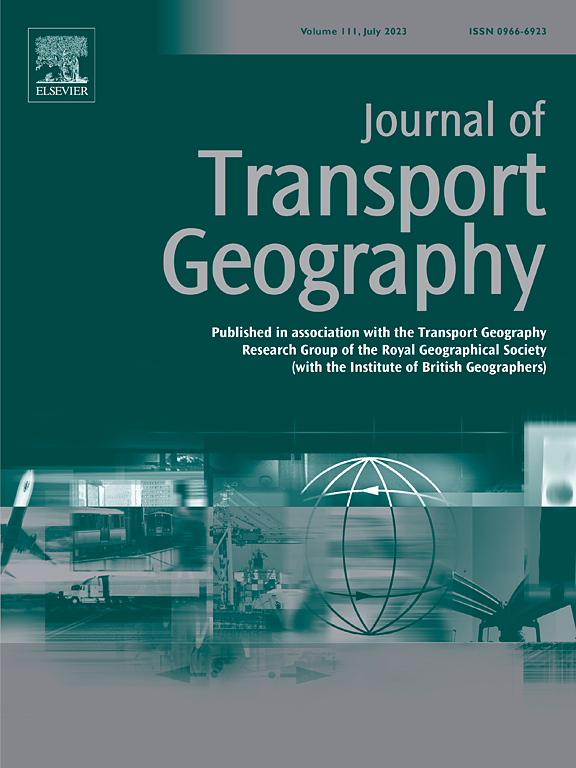Unlocking nighttime mobility: Land use and accessibility in public transit for night commuters
IF 5.7
2区 工程技术
Q1 ECONOMICS
引用次数: 0
Abstract
Night commuters are integral to urban transportation systems. Essential services such as healthcare and manufacturing rely on workers who travel at night, and reliable mobility options are crucial for them. A gap exists in understanding how land use and accessibility influence public transportation use among night commuters. This study addresses this gap by using public data to explore land use and accessibility factors that affect night commuters' public transportation use in New York State. We investigated (1) the demographic characteristics of night commuters; (2) the influence of land use and accessibility on nighttime public transportation use; and (3) potential improvements to increase public transportation use and their impact. We combined data from the National Household Travel Survey with the Smart Location Database to link home locations with land use characteristics. Using logistic regression, we found that although females are generally less likely to be night commuters, they are more likely to use public transportation. Longer commute distances are associated with higher use of public transportation. Increasing job density along fixed-guideway transit routes and improving overall job accessibility via public transportation significantly enhances public transportation use among night commuters. This research provides actionable insights for public transportation agencies and urban planners to support night commuters, improving access and encouraging nighttime employment.
解锁夜间交通:为夜间通勤者提供公共交通的土地利用和可达性
夜间通勤者是城市交通系统不可或缺的一部分。医疗保健和制造业等基本服务依赖于夜间工作的工人,可靠的交通选择对他们来说至关重要。在了解土地利用和可达性如何影响夜间通勤者的公共交通使用方面存在差距。本研究通过使用公共数据来探索影响纽约州夜间通勤者使用公共交通的土地利用和可达性因素,从而解决了这一差距。我们调查了(1)夜间通勤者的人口统计学特征;(2)土地利用和可达性对夜间公共交通使用的影响;(3)增加公共交通使用的潜在改进措施及其影响。我们将来自全国家庭旅行调查的数据与智能位置数据库相结合,将家庭位置与土地使用特征联系起来。通过逻辑回归,我们发现,尽管女性通常不太可能是夜间通勤者,但她们更有可能使用公共交通工具。更长的通勤距离与更多地使用公共交通工具有关。增加固定轨道交通沿线的工作密度和通过公共交通改善总体工作可达性,显著提高了夜间通勤者的公共交通使用。这项研究为公共交通机构和城市规划者提供了可操作的见解,以支持夜间通勤者,改善通道并鼓励夜间就业。
本文章由计算机程序翻译,如有差异,请以英文原文为准。
求助全文
约1分钟内获得全文
求助全文
来源期刊

Journal of Transport Geography
Multiple-
CiteScore
11.50
自引率
11.50%
发文量
197
期刊介绍:
A major resurgence has occurred in transport geography in the wake of political and policy changes, huge transport infrastructure projects and responses to urban traffic congestion. The Journal of Transport Geography provides a central focus for developments in this rapidly expanding sub-discipline.
 求助内容:
求助内容: 应助结果提醒方式:
应助结果提醒方式:


